Arugula Microgreens 101: Benefits and How to Grow
Arugula Microgreens are a superfood that you can grow right in your own kitchen. They are full of health benefits and taste great too. Learn everything you need to know about arugula microgreens.
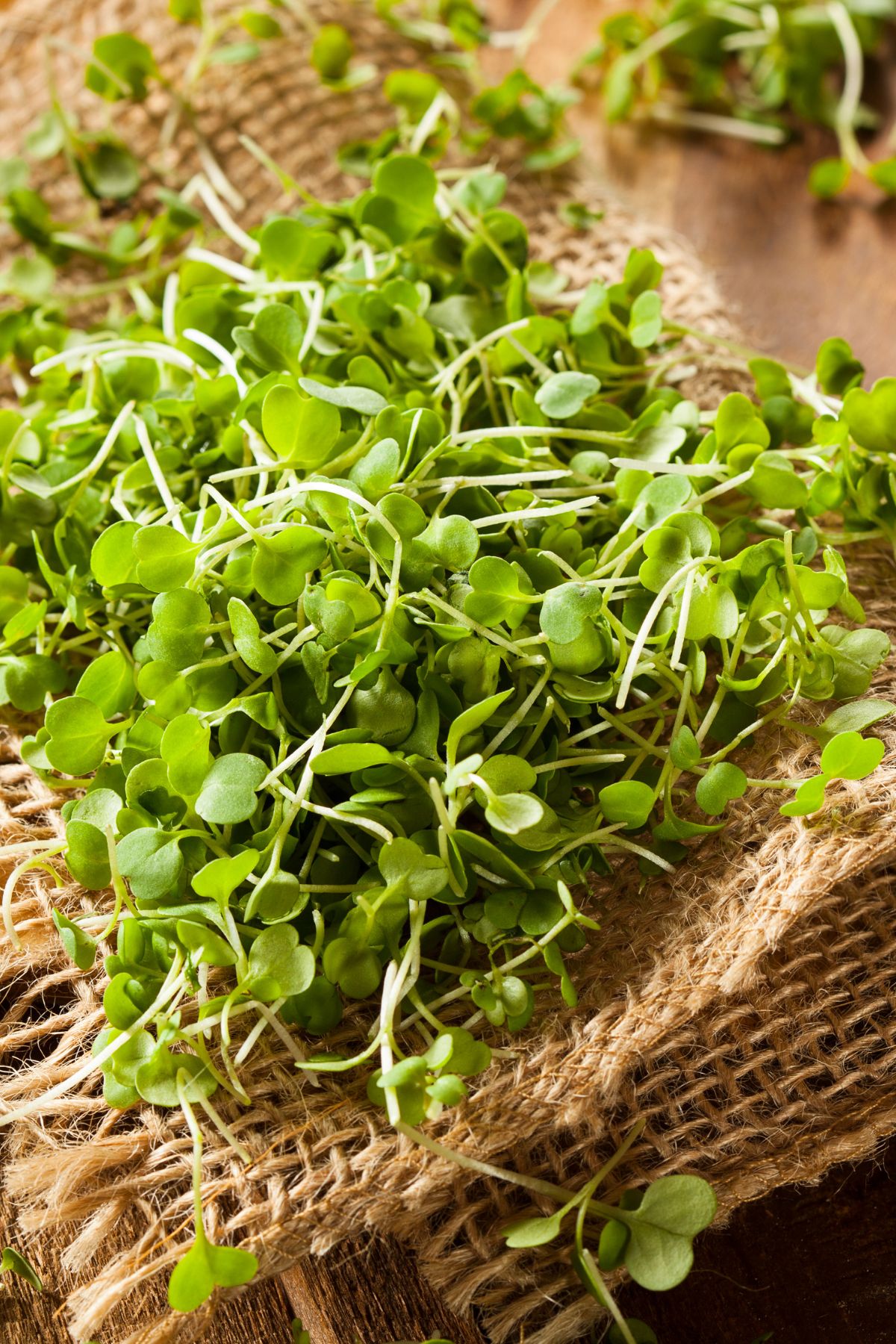
Arugula Microgreens Overview
Arugula microgreens are very young arugula plants, harvested just days after germination and with a fresh, crisp texture.
They are cruciferous and closely related to healthy vegetables like broccoli, kale, and radish. Because you usually eat them raw, you can really make the most of their nutritional benefits.
Arugula is known by different names in different parts of the world. These include rucola, garden rocket, roquette, and colewort.
Arugula microgreens vs. arugula sprouts
Arugula microgreens are not the same thing as arugula sprouts.
Sprouts are seeds that have only just germinated and are eaten before they have developed leaves. Microgreens are grown in soil and are complete plants, with leaves, stems, and roots.
Nutrients and flavor
When it comes to arugula microgreens, everything is intensified. This means they have a spicy, peppery taste very much like mature arugula – but stronger. And they also contain the same nutrients – but more of them. This is because they are harvested so early in their growth cycle.
The main advantage of this is that we can eat a small quantity of arugula microgreens yet still reap all the nutritional benefits of a larger quantity of mature leaves.
This is good news if you struggle to include enough fresh veggies in your diet. A handful of arugula microgreens is packed with goodness, and very easy to pop into a sandwich or mix into a salad. They are one of the most flavorful and most popular microgreens!
Benefits of growing your own
Finding arugula microgreens at the grocery store isn’t always easy and their freshness isn’t always guaranteed. So growing them at home is a great option – it ensures you have a consistent supply of fresh microgreens on hand whenever you need them.
Best of all, they are exceptionally easy to grow. And the whole process – from sowing the seeds to harvesting them – can take less than 10 days. Plus, of course, growing your own microgreens is better for the environment.
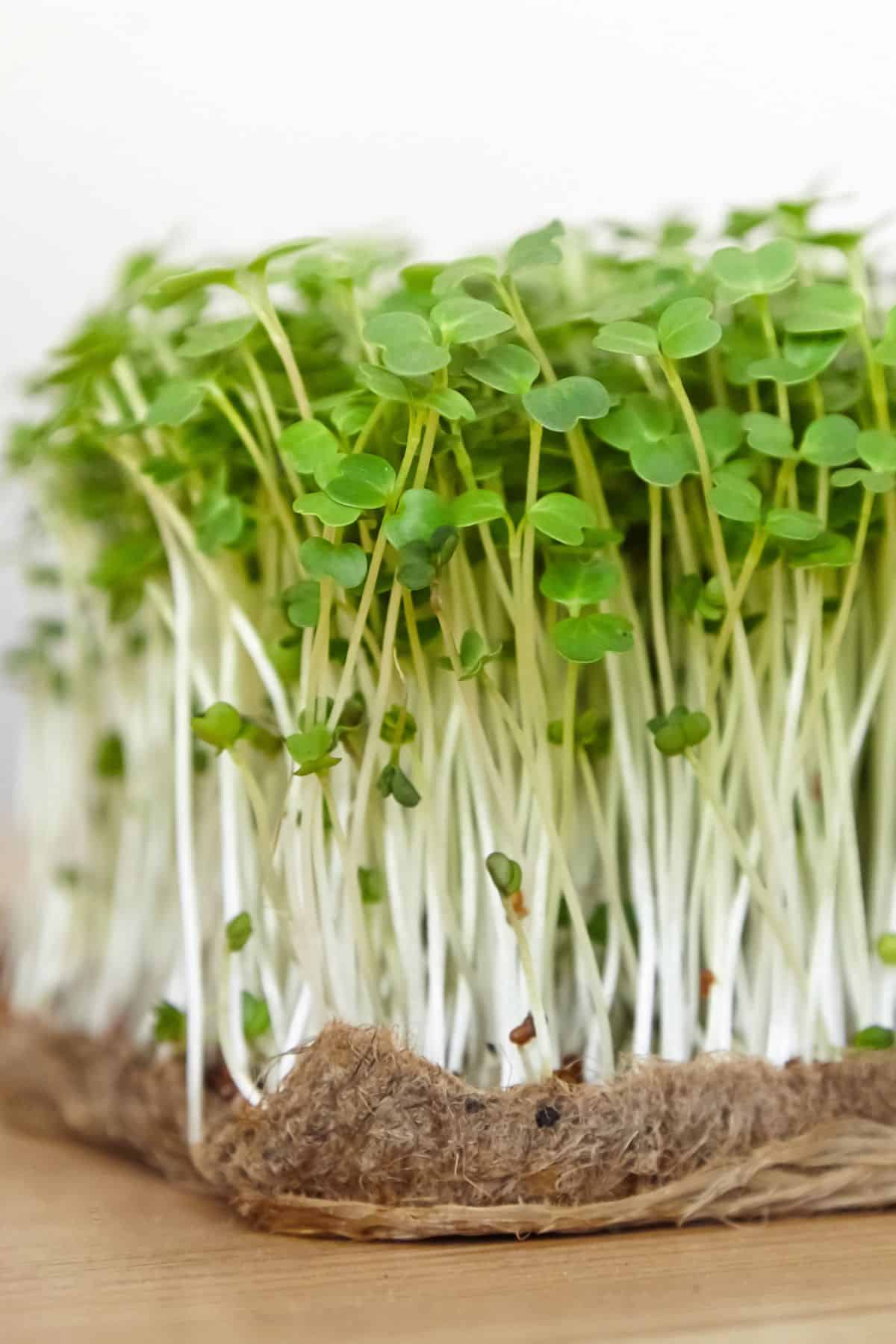
Health Benefits
With arugula microgreens, you get all the health benefits of cruciferous vegetables in a very concentrated form! Indeed, studies have shown that microgreens generally contain anywhere from 4 to 40 times the nutrients of their mature counterparts.
They provide lots of calcium – important for bone and tooth health – plus folate, carotenoids, and a host of vitamins and minerals, including iron, potassium, vitamin C, and manganese.
Arugula microgreens are also rich in phytochemicals that play an important role in cancer prevention and are lower in oxalates than many other leafy greens.
This is a big advantage because oxalates tend to bind to minerals and stop us from absorbing them properly.
It’s no wonder, then, that many experts consider microgreens to be “superfoods”!
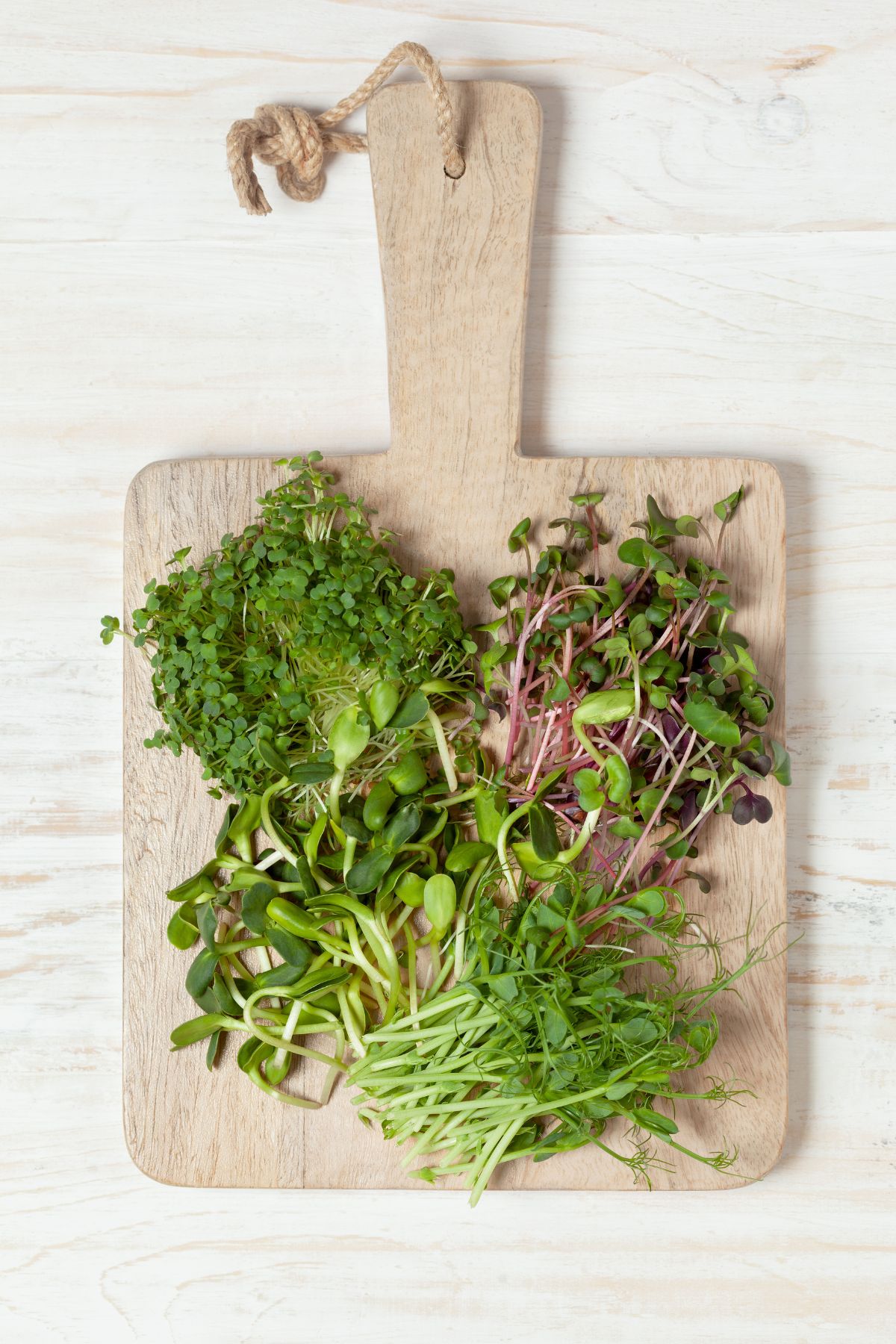
How to Grow Arugula Microgreens Complete Guide
If you think you’ll need lots of equipment and time to grow a consistent supply of arugula microgreens at home, then think again!
All that’s required are seeds, some very basic supplies, water, and light. You won’t need much room – a sunny windowsill is enough space to yield a crop for family use – and after the initial sowing, there’s very little to do.
You won’t need a green thumb, either. Arugula microgreens are satisfyingly quick and easy to grow, making the process a fun one to share with kids.
Supplies you’ll need
Here’s everything you’ll need to get started growing nutritious arugula microgreens in the comfort of your own home.
Arugula seeds
You can grow pretty much any kind of arugula seeds indoors as microgreens, although the best variety to choose is roquette arugula seed. Try to avoid any varieties listed as “wild” arugula because they grow so low to the soil that harvesting them can be difficult.
Whichever variety of seeds you choose, ensure they are organic. Using organic seed means they will be free from harmful pesticides and other additives.
Buy now: organic arugula seeds.
Growing medium
Soil is the medium typically chosen for growing microgreens. You could use potting soil, although my preference is for seed soil. This is lightweight and has a fine-grained texture, so it is easy for the fragile root hairs to become established.
If you are concerned that soil may be too messy for use in the home, then you have other options.
These include grow mats, paper towels, and coconut coir. You could even try vermiculite! Although it’s usually used as an additive to regular soil to boost aeration, it can be used as a growing medium by itself and gives the mineral content of your microgreens a little boost.
Containers
To make it easy to harvest your micro arugula, you’ll need shallow trays (1 to 2 inches deep).
If you’re just testing the waters, you could use the eco-friendly option of recycled fruit containers or pie plates. However, these will likely become too small should you decide to grow arugula microgreens on a regular basis!
The tray in which you plan to grow the microgreens will need holes for drainage. This will prevent the growing medium from becoming waterlogged, which – in turn – could lead to mold and rot.
You will also need a second tray, larger than the growing tray. You will place this beneath the growing tray and use it for watering the seeds. Watering seeds from the bottom keeps their leaves and stems dry – another good way to prevent mold.
Spray bottle
You’ll use this for watering the seeds after you’ve sown them. Arugula seeds are very small so it’s best to water them with a very fine mist.
Light source
In order for your microgreens to turn green, they will need a good supply of light to use in the process of photosynthesis.
In general, the amount of sunlight they’ll receive on a windowsill will be enough. But if you don’t have a large enough windowsill, you can use a grow light instead. Some people prefer this option because it ensures that all the seeds receive the same amount of light at all times.
How to sow your arugula microgreen seeds
First, place your growing medium inside your container until it just comes up to the rim. Using your hand, ensure the surface is level and pat it down very gently. (Do not pat it down if you’re using coconut coir, as it can become too compact).
Gently spray the soil with water from your bottle and allow it to soak in. Then lightly spray the surface again.
It’s now time to sow your seeds. Unlike other microgreens, arugula seeds don’t need soaking to soften the seed hull. They are so tiny that they break open easily.
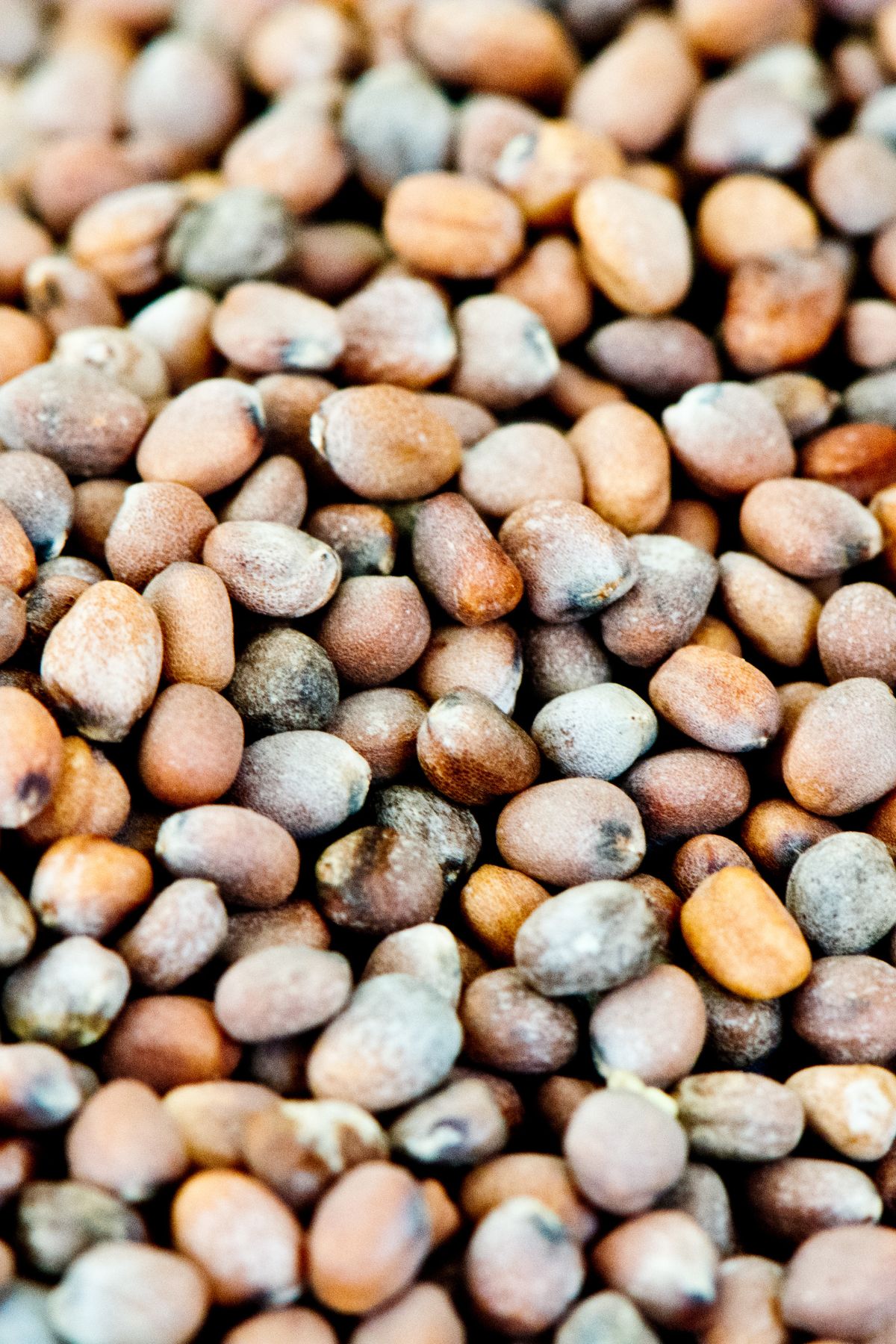
Spread the seeds out in a single layer across the surface of the soil. Since they are so small, some people find it easier to do this using a shaker bottle. In terms of density, you’ll need around an ounce of seeds to cover a tray measuring 10 x 20 inches.
If any seeds have clumped together, spread them out gently using your fingertips. If too many seeds are stuck together, they are likely to rot.
How to germinate the seeds
Don’t cover the seeds with soil – simply give them a light misting with the spray bottle. Take care here, as they are so small they can be accidentally blown around.
To encourage germination, you need to keep the seeds moist. To do this, cover the tray in order to retain humidity and block out the light. You can use the second, larger tray to cover the growing tray.
I also recommend placing a heavy object (around 5 pounds) on top of the cover. The purpose of this – besides keeping the cover in place and better retaining moisture – is to push the seeds down further into the soil. The roots will then extend deeper below the surface, making your microgreens much more sturdy.
You can now place the tray in a warm spot and leave the seeds to germinate for 2 days. You won’t even need to water them, because the weighted cover will hold in any moisture.
After 2 days, lift the cover and take a look at the seeds. They are ready for the next step when they have almost all sprouted and have tiny leaves (although they will probably look yellow at this point).
If they are not at this stage yet, mist them with water again and replace the cover. Leave them to germinate for up to 2 days longer.
Expose the arugula microgreens to light and watch them grow!
Once most of the seeds have sprouted, take off the cover and expose them to as much natural light as possible. If you opt to use a grow light, they will need to be underneath it for between 4 and 8 hours every day.
Place the growing tray on top of the second, larger tray and water the seeds well. The soil will absorb the water via the drainage holes in the growing tray. Once the soil is moist, remove the second tray to avoid overwatering the seeds. Too much water may cause them to rot or have mold issues.
From now on, you will be watering the seeds using the bottom tray (called bottom watering). You’ll need to do this as often as it takes to keep the soil consistently moist.
Note: In the early stages, it might look as if the seeds are covered in fuzzy white mold. However, these white fibers are actually root hairs – just what you want to see! You shouldn’t have any issues with mold as long as you stick to watering the seeds from the bottom. The root hairs will disappear not long after you expose the sprouting seeds to light.
Within several days the seeds will begin to grow into microgreens.
They will look pale in color initially, but once they have received enough light they will start to turn green.
If you are familiar with growing microgreens, you’ll probably notice that arugula microgreens take a bit longer than others to actually turn green. This is normal, so don’t be concerned if yours still look a bit yellow for the first couple of days. They should have developed their rich, green color by day 4.
If not, they may not be receiving enough light. It’s important to rectify this – using a grow light if necessary – as pale microgreens will be inferior in taste and less nutritious than those that are fully green.
Aim to keep your growing microgreens in a warm area – around 70℉ (21℃) is ideal. They also require good ventilation and a humidity level of around 50%.
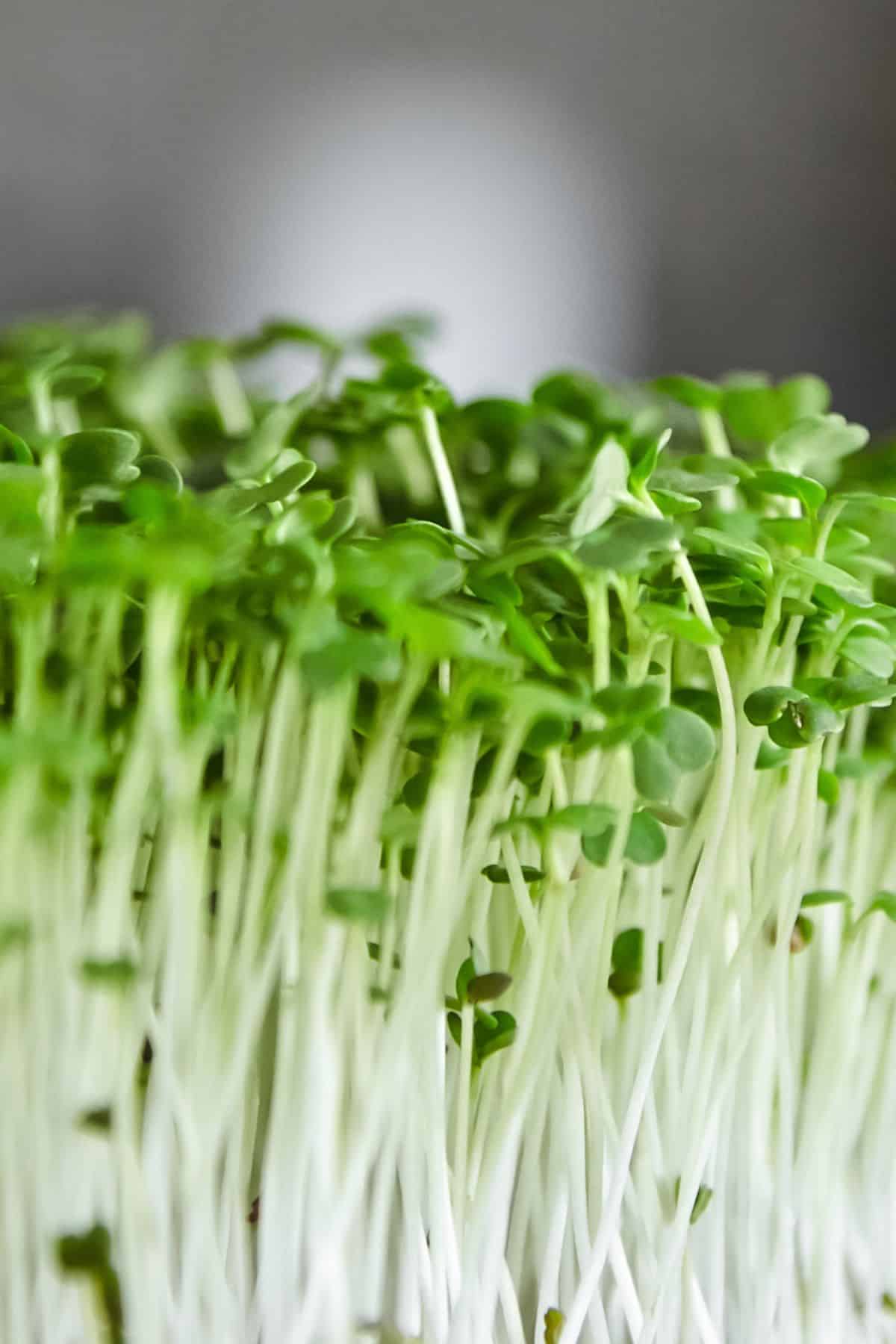
Harvesting your arugula microgreens
In as little as 7 days from sowing, your arugula microgreens will be ready to harvest, although they sometimes require several days more.
To ensure they are ready, check that they are between 2 and 3 inches tall, bright green in color, and have two cotyledon leaves. It’s important to harvest them before the true leaves grow in, as these will have an adverse effect on their flavor.
Stop watering the microgreens 12 hours before harvesting to make sure they are dry. This makes it easier to store them afterward. Using a sharp pair of scissors, snip off the microgreens in bunches just above the surface of the soil.
You can harvest the entire batch in one go or cut what you need. Just be sure to harvest the entire crop before it becomes too old.
You’ll need to sow the seeds for another batch at this point – sadly, microgreens don’t regrow after harvesting. But you’ll only need to wait for around 7 to 10 days more for your next crop!
Storing your arugula microgreens
Microgreens are always at their best in terms of taste and nutritional value right after harvesting. But if you need to cut more than you can use, they will store well in the fridge for around 4 days.
Wrap them in a paper towel to absorb any moisture, as this will maximize their shelf life. Then place them in a plastic bag or airtight container and put them in the crisper drawer until you are ready to use them.
Arugula Microgreens Growing Steps
Step One
Place your growing medium into a suitable container. You can use seed soil, potting soil, growing mats, paper towels, or coconut coir.
Step Two
Spray your growing medium lightly with water and allow it to sink in. Respray the surface once again.
Step Three
Sprinkle your arugula seeds over the surface, ensuring they are fairly dense but in a single layer.
Allow around an ounce of seeds for every 10 x 20 inches of growing space.
Step Four
Gently mist the seeds with a spray bottle, then cover them and place a weight on top to retain moisture and block out the light.
Leave to germinate until all the seeds have sprouted.
Step Five
Remove the cover and expose the seeds to plenty of natural light, or use a grow lamp. Water regularly.
Step Six
Harvest within 7 to 14 days of planting.
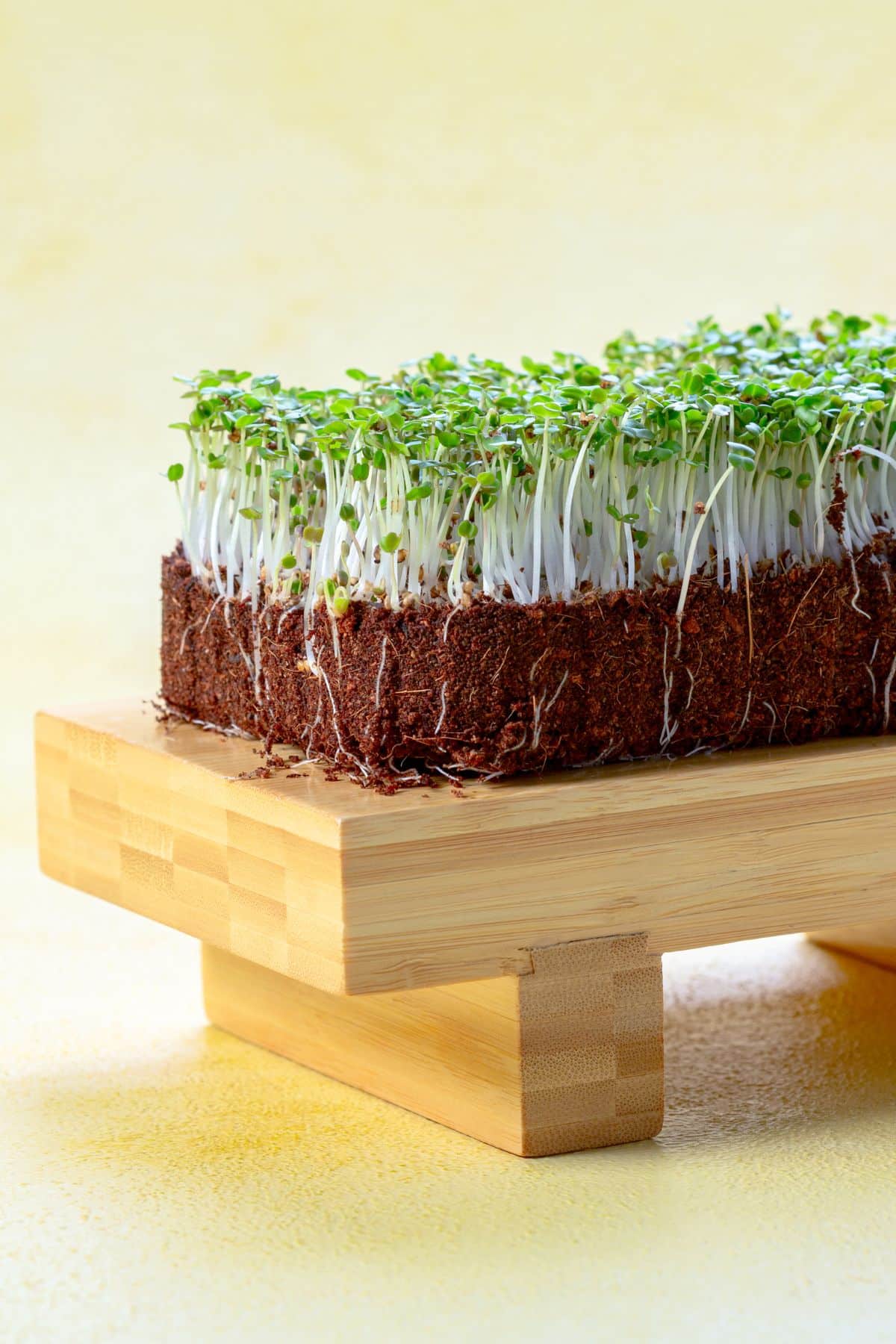
Microgreen FAQs
Your arugula microgreens may be ready to harvest and enjoy in as few as 7 days after sowing.
This is because the best time to eat them is after germination, as soon as they have their cotyledon leaves but before the true leaves have grown in.
In terms of flavor, arugula microgreens are a more intense version of their mature counterparts. Pungent and peppery, they add a fresh and crunchy texture to your dishes – not to mention a welcome boost of nutrients. They taste similar to broccoli microgreens.
Here are some ideas for using them:
Use them as a healthier alternative to lettuce in sandwiches, burgers, tacos, etc.
Use them as a garnish for egg and meat dishes.
Add a handful to your green smoothies.
Stir them into your salads.
Add to soups, stews, and stir-fries just before the end of the cooking time. This will ensure they retain their texture and nutrient content.
Growing Tips
- Use organic arugula seeds, ideally the roquette arugula variety.
- For ease of harvesting, make sure your growing container is no more than 1 to 2 inches deep.
- Instead of soil you can use grow mats, coconut coir, or paper towels.
- After germination, always water your seeds from the bottom using a second tray beneath your growing tray.
- Ensure your arugula microgreens receive plenty of natural light as they grow, preferably on a sunny windowsill. If you use a grow lamp, place them under it for at least 4 to 8 hours daily.
- For best results, try to maintain a room temperature of around 70℉ (21℃), with 50% humidity and adequate ventilation.
- Ensure you harvest all your microgreens once they are 2 to 3 inches tall and have two cotyledon leaves.
- Store unused microgreens in the refrigerator for up to 4 days in a plastic bag or airtight container.
Don’t Miss These Microgreens Resources
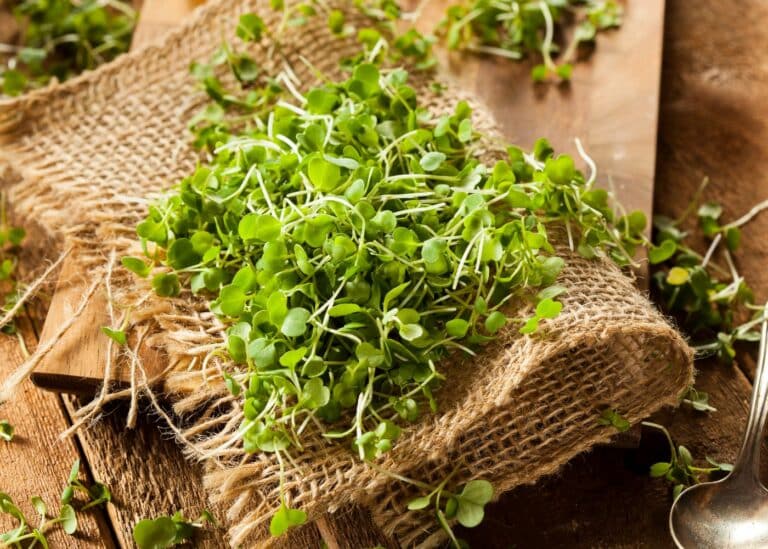
How to Grow Arugula Microgreens
Arugula Microgreens are a superfood that you can grow right in your own kitchen. They are full of health benefits and taste great too. Learn everything you need to know about arugula microgreens.
- Total Time: 168 hours 30 minutes
- Yield: 32 servings
Ingredients
- 2 tablespoons organic arugula microgreen seeds
- seed soil/potting soil
Instructions
- Place the soil into the growing container until it reaches the rim. Pat gently to level it out.
- Spray the soil with water. Wait until it is absorbed then spray again.
- Sprinkle the arugula seeds evenly over the surface of the soil in a single, dense layer. Allow around an ounce of seeds for every 10 x 20 inches of growing space.
- Mist the seeds with water, then cover. Leave to germinate for 2 to 4 days, until all the seeds have sprouted.
- Remove the cover and expose the seeds to plenty of natural sunlight.
- Water the growing microgreens from the bottom as often as necessary to keep the soil consistently moist.
- Harvest the microgreens when they are a rich green color and 2 to 3 inches tall, between 7 to 14 days after sowing.
Notes
- Use organic arugula seeds, ideally the roquette arugula variety.
- For ease of harvesting, make sure your growing container is no more than 1 to 2 inches deep.
- Instead of soil you can use grow mats, coconut coir, or paper towels.
- After germination, always water your seeds from the bottom using a second tray beneath your growing tray.
- Ensure your broccoli microgreens receive plenty of natural light as they grow, preferably on a sunny windowsill. If you use a grow lamp, place them under it for at least 4 to 8 hours daily.
- For best results, try to maintain a room temperature of around 70℉ (21℃), with 50% humidity and adequate ventilation.
- Ensure you harvest all your microgreens once they are 2 to 3 inches tall and have two cotyledon leaves.
- Store unused microgreens in the refrigerator for up to 4 days in a plastic bag or airtight container.
- Prep Time: 30 minutes
- Cook Time: 7 days
- Category: Microgreens
- Method: Gardening
- Cuisine: Healthy
- Diet: Vegetarian
Nutrition
- Serving Size: 1 tablespoon
- Calories: 1
- Sugar:
- Sodium:
- Fat:
- Saturated Fat:
- Trans Fat:
- Carbohydrates: 0.1 g
- Fiber: 0.1 g
- Protein: 0.1 g
- Cholesterol:
Don’t forget to join my newsletter list to get exclusive clean eating recipes and tips. The newsletter is 100% free with no spam; unsubscribe anytime.
About the Author: Carrie Forrest has a master’s degree in public health with a specialty in nutrition and is a certified holistic nutritionist. She is a top wellness and food blogger with over 5 million annual visitors to her site. Carrie has an incredible story of recovery from chronic illness and is passionate about helping other women transform their health. Send her a message through her contact form.
Note: this post is for informational purposes only and is not intended as medical advice. Please consult your healthcare provider for recommendations related to your individual situation.



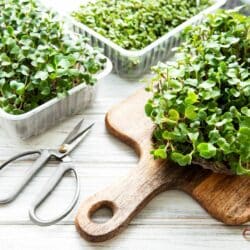
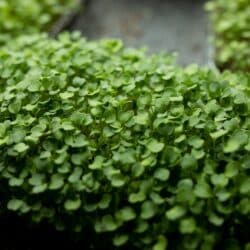
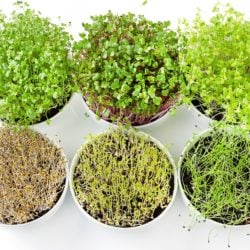
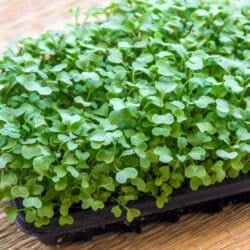




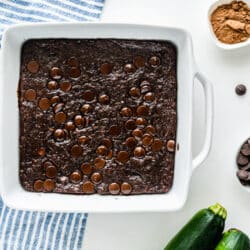









I love these spicy superfood microgreens! So easy to grow.
This is an excellent guide, thank you!